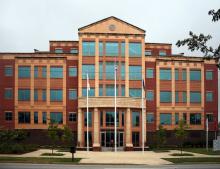Oconee County, South Carolina: Achieving Goals Beyond AT&T Obstruction
Most residents and businesses in Oconee County, South Carolina, used dial-up connections when county officials applied for stimulus funding in 2010; there were still people in the county with no Internet access at all. A few had DSL connections, but even county facilities struggled with antiquated infrastructure. After an AT&T attack upended their plan to offer retail services, they pressed on and improved connectivity in the rural community. Powerful incumbent forces and a bad state law, however, eventually led this community to choose privatization.
Ripe For Stimulus
We spoke with Kim Wilbanks, who served as Project Manager for Oconee FOCUS, the 240-mile fiber optic publicly owned network. She worked with a small team of people that applied for funding through the American Recovery and Reinvestment Act (ARRA) to obtain funds for the project. Wilbanks and former FOCUS Director Mike Powell were instrumental in establishing the infrastructure. The Wilbanks family used dial-up Internet access until 2010 when AT&T finally installed DSL on her street on the edge of town in the mostly rural county.
The mountains and hills across the county’s 674 square miles create a terrain that is speckled with man-made lakes. Fishing, water skiing, and sailing are popular and the lakes and waterfalls contribute to the region’s hydroelectric energy. Approximately 75,000 people live in Oconee County scattered within many of the small rural communities. The largest city’s population is only about 8,000.



